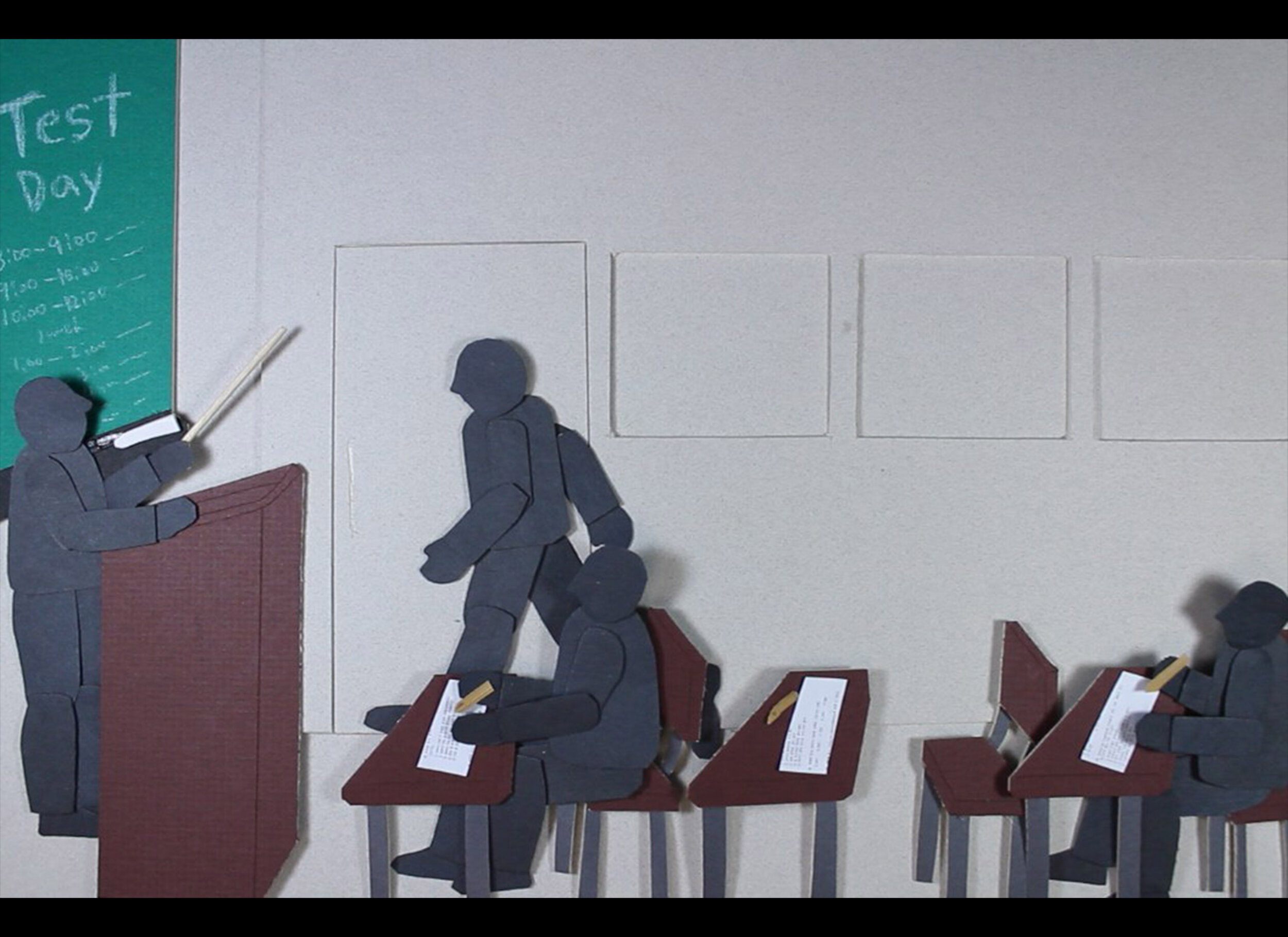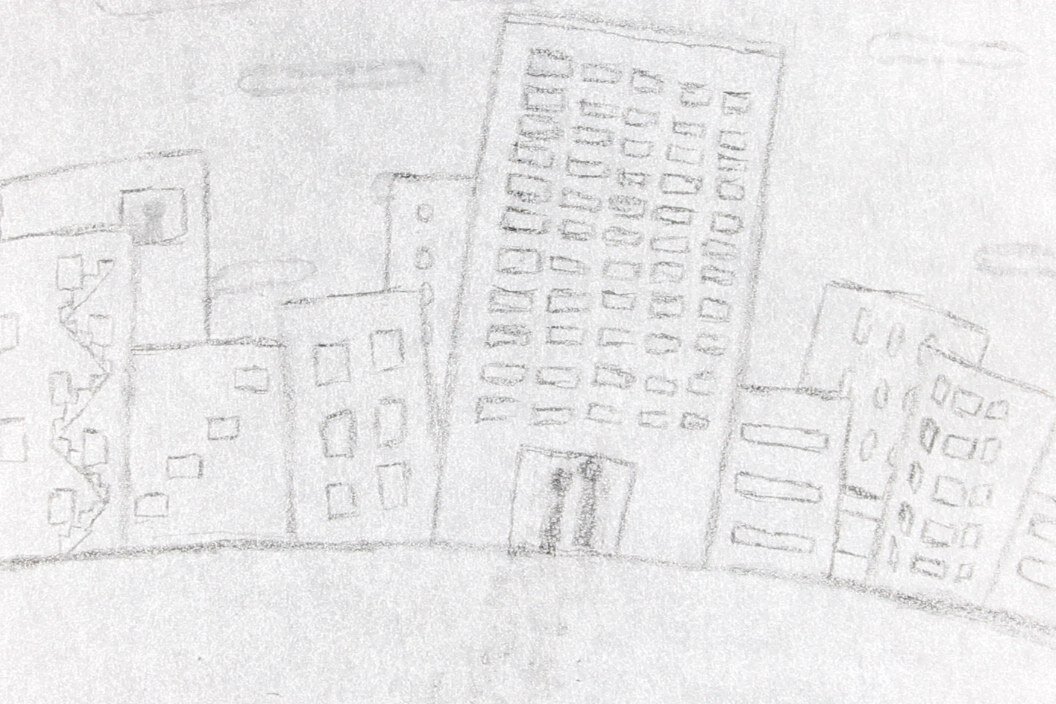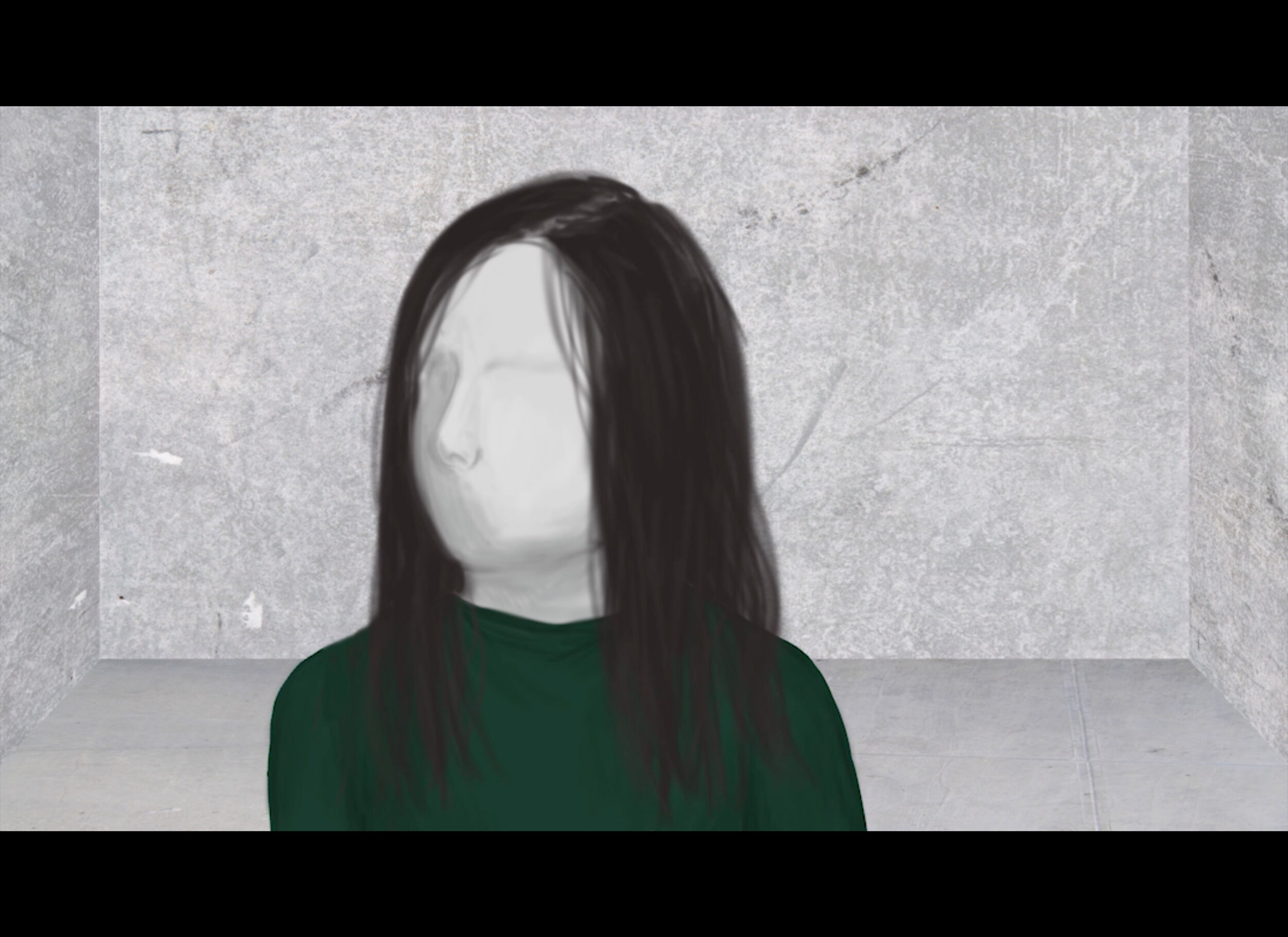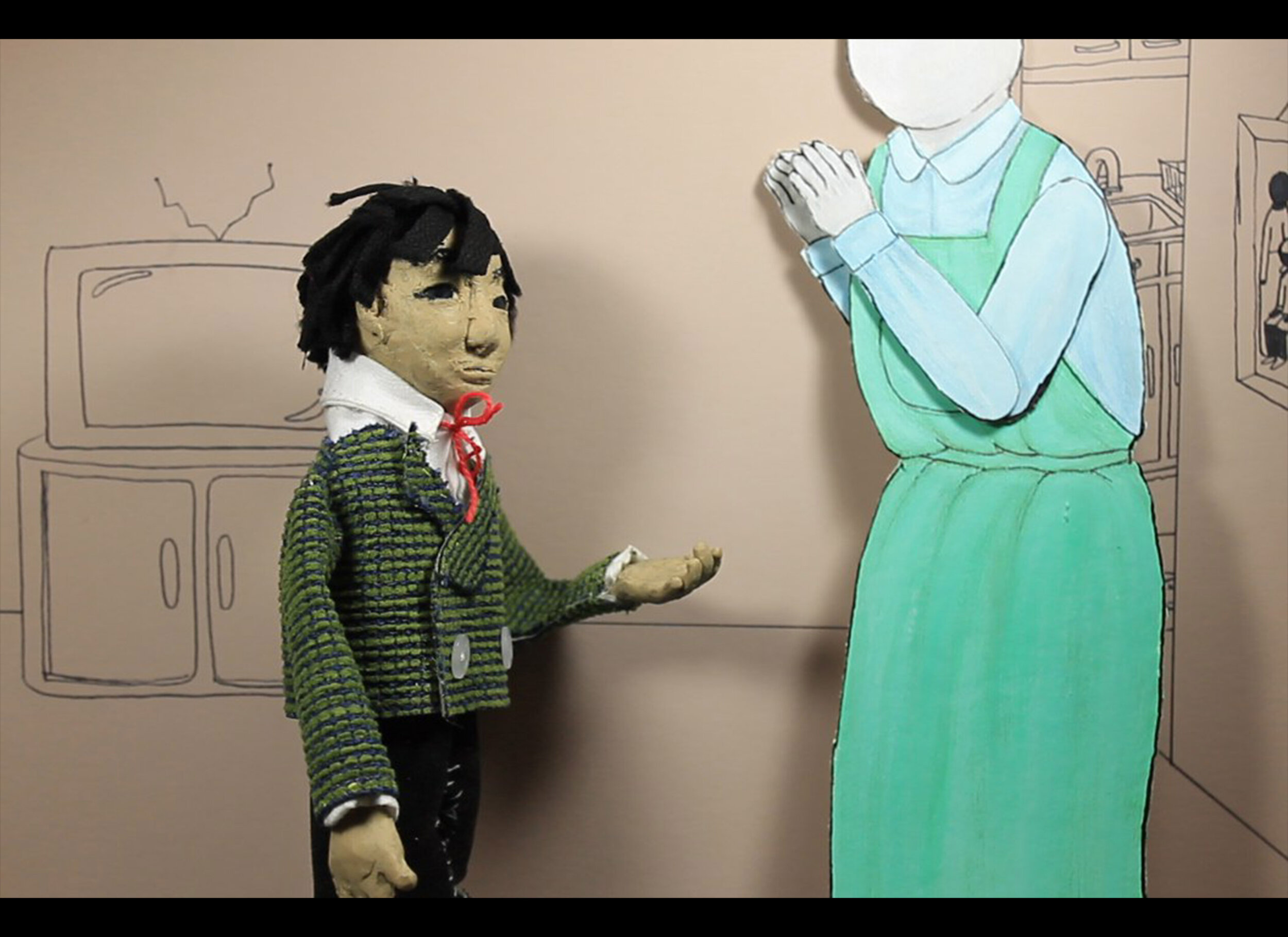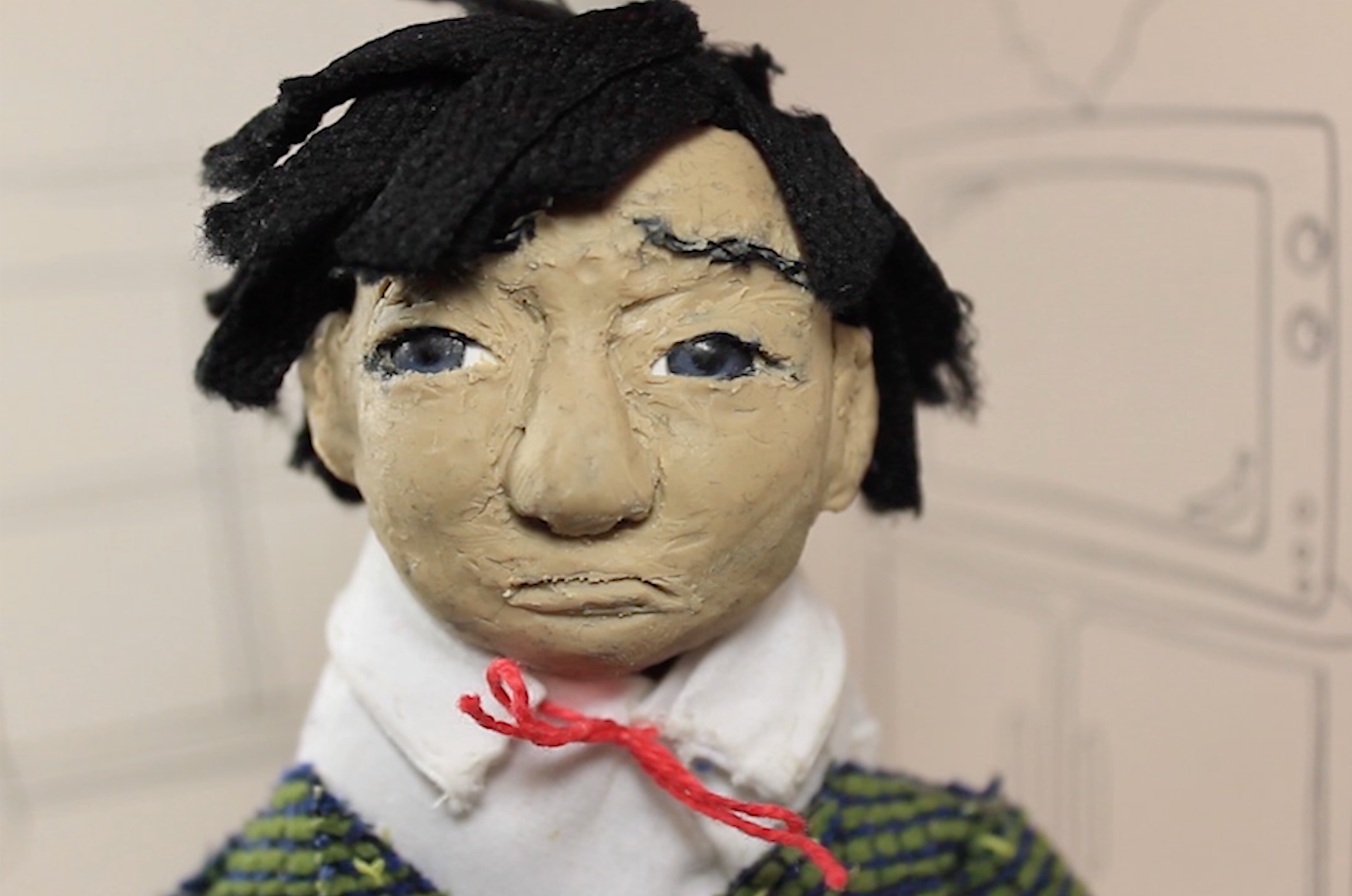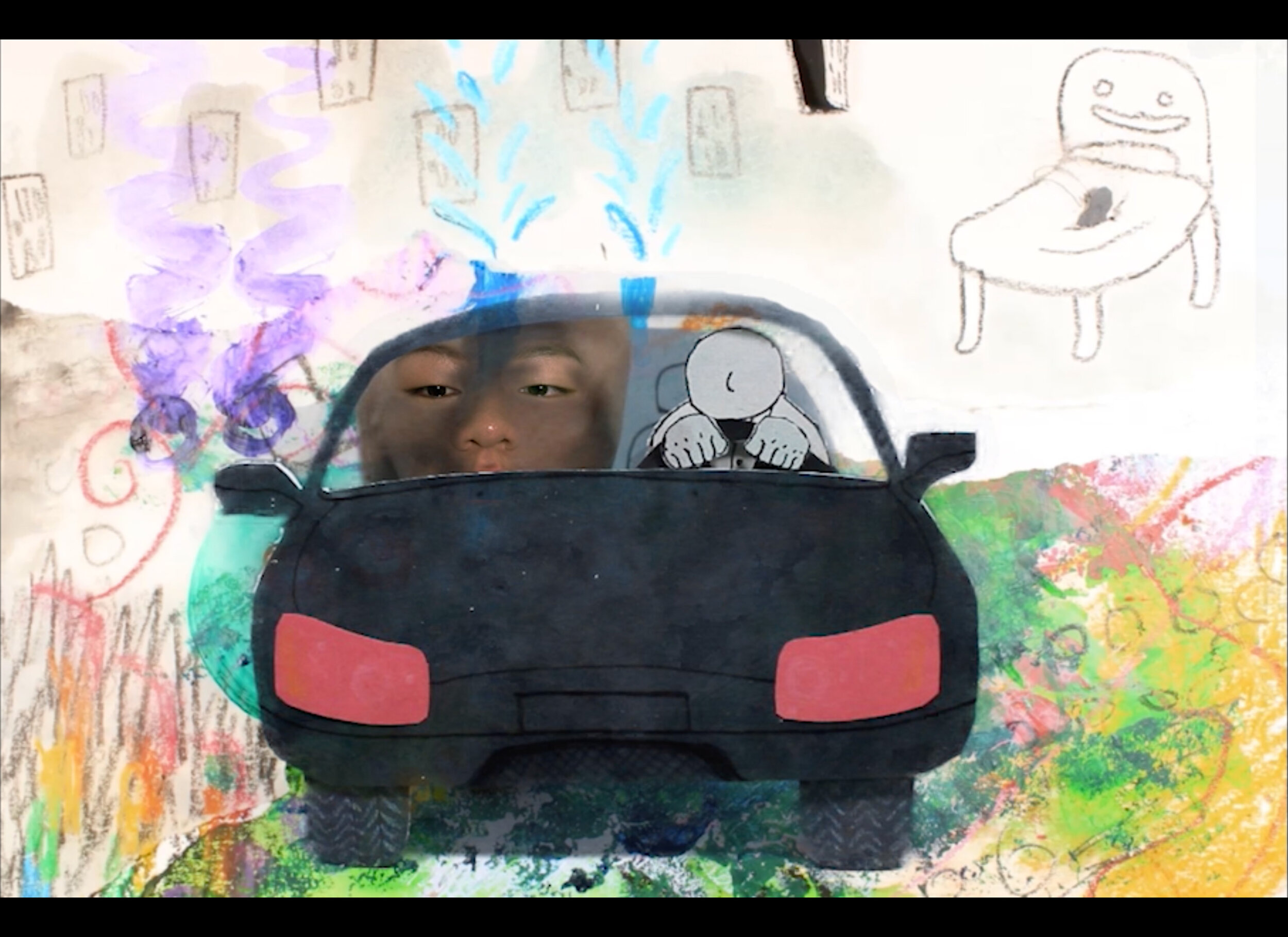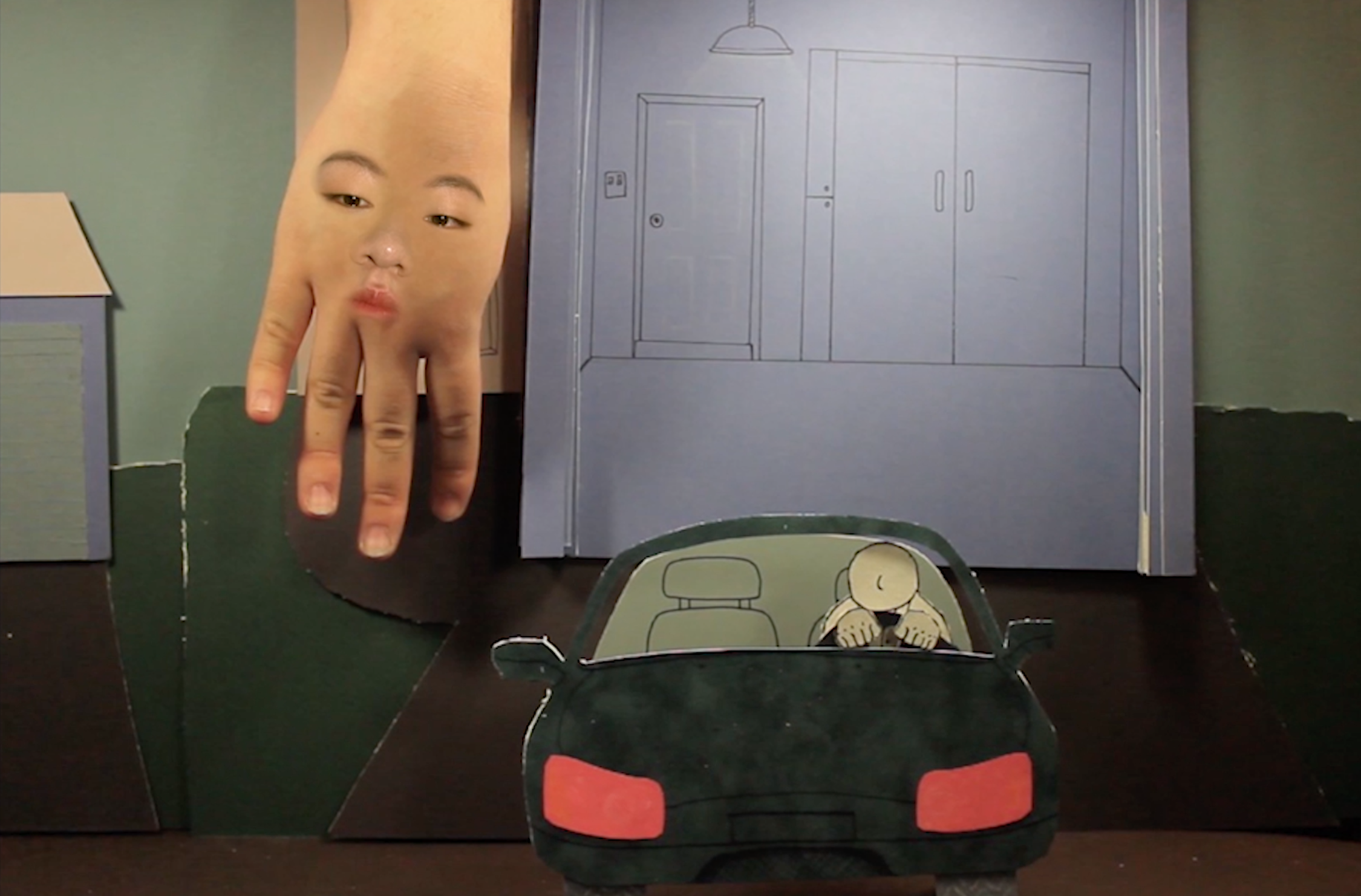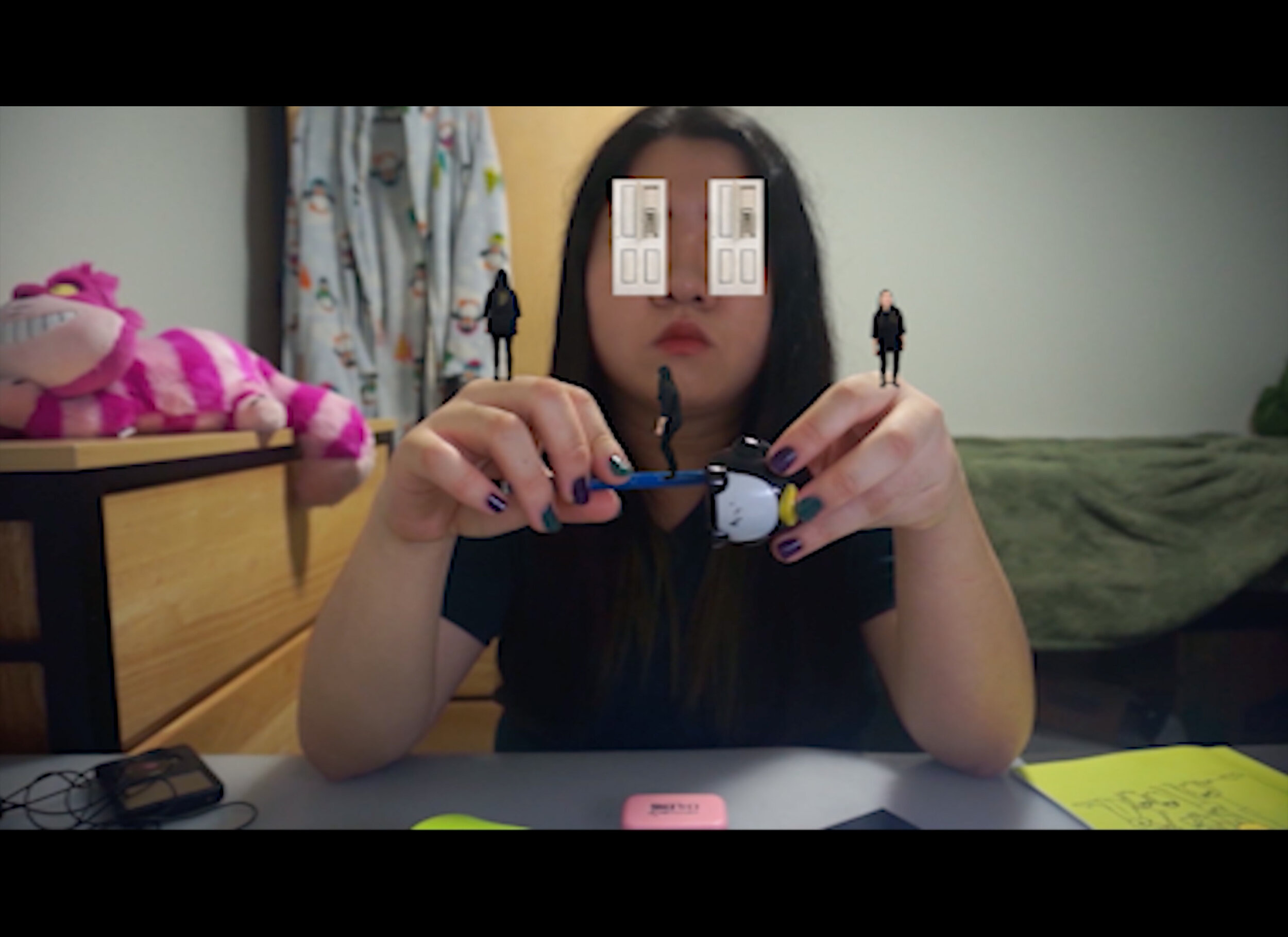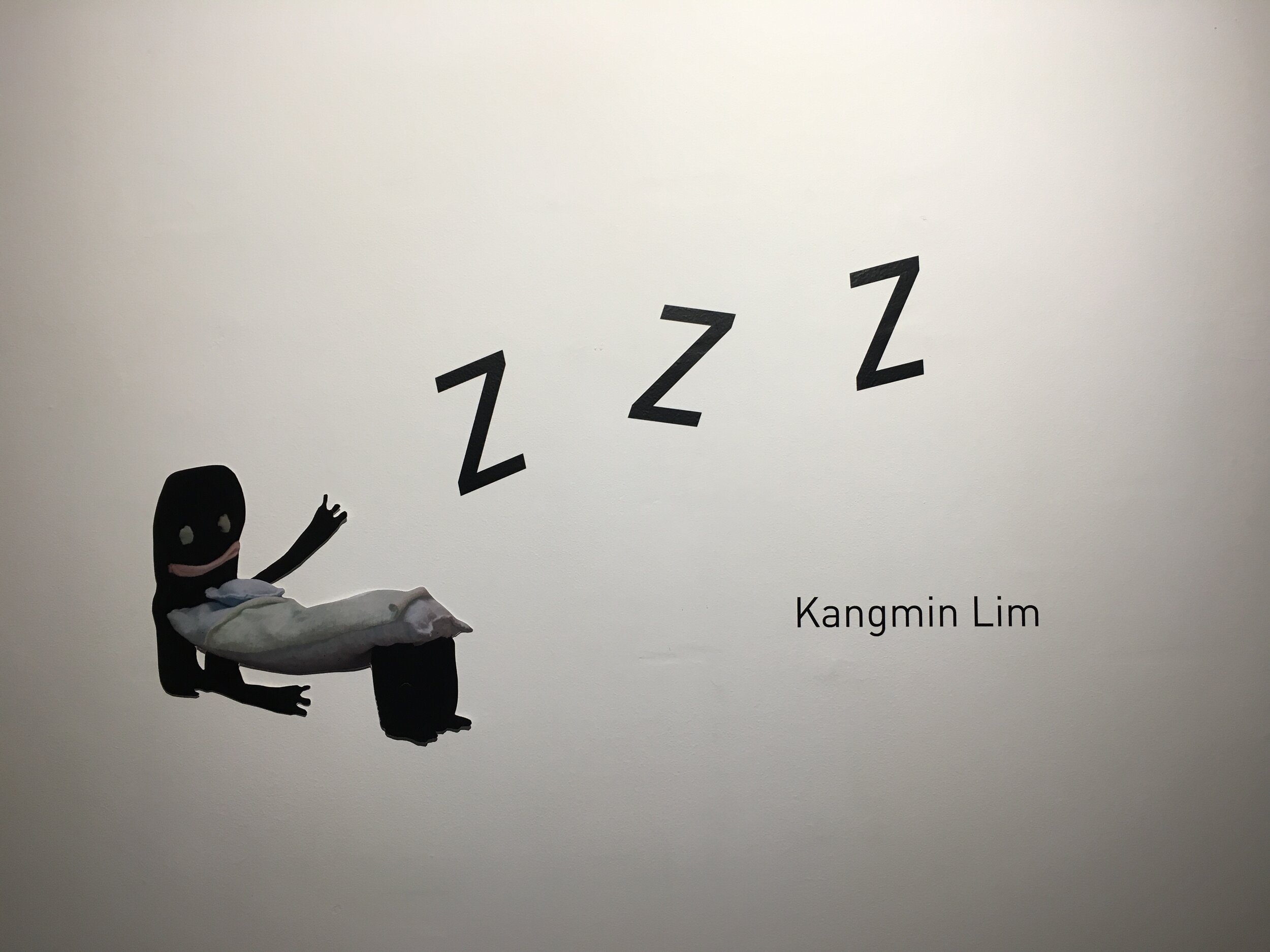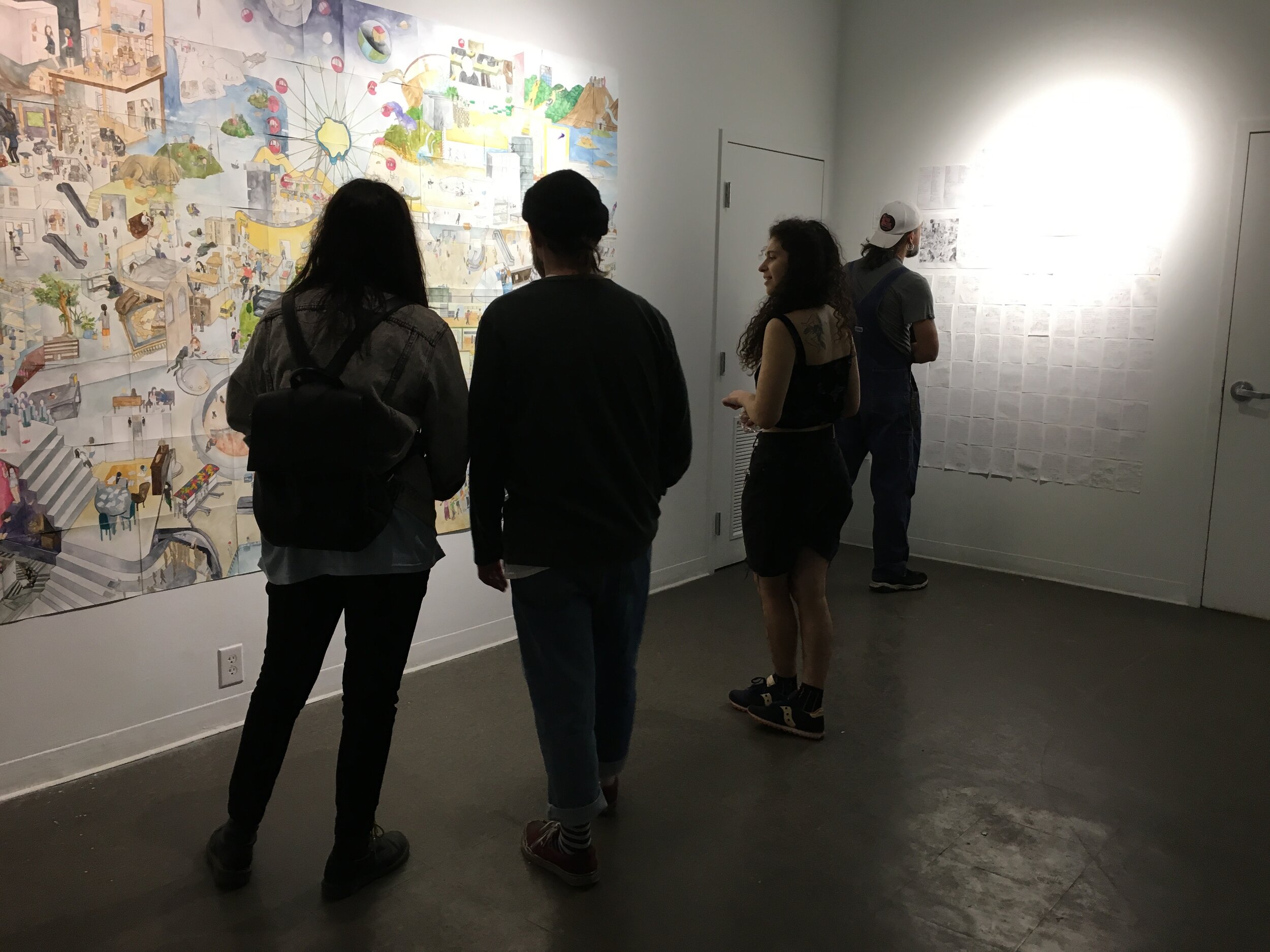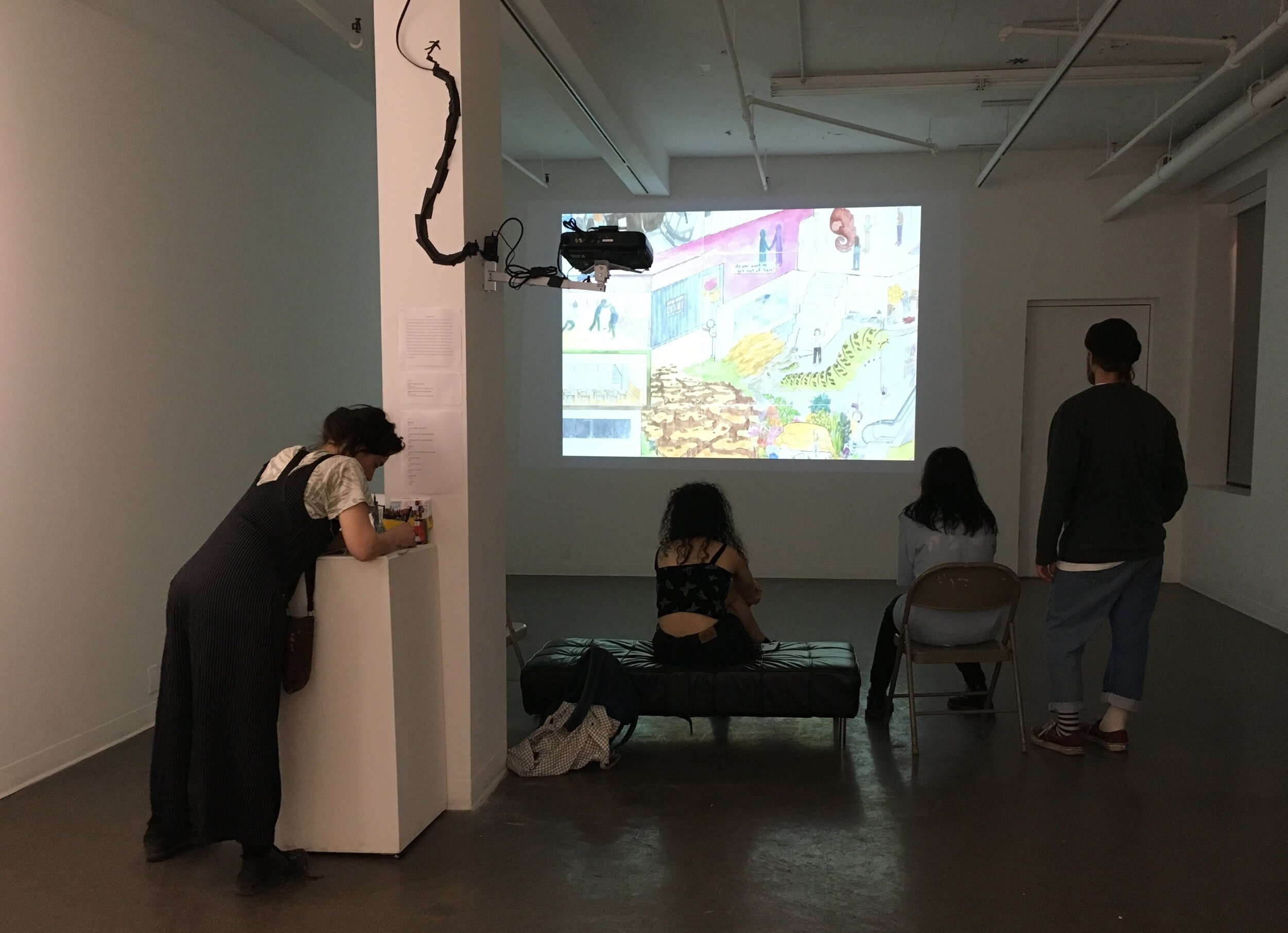ZZZ(2018)
ZZZ series - drawings and films
ZZZ series consist of watercolor drawings based on dream journal, and a 24minutes long experimental animations completed in 2018. My pieces explores the borderlands of consciousness and home through dream. Using a mix of traditional and digital mediums to create imaginary worlds, I combine personal experiences and social issues such as racism, misogyny, homophobia, familism, and social pressures in East Asian culture. In my work students in school uniforms float above the sea with chairs and desks while taking an exam. Some of them try to escape and swim to land. I ask the audience to take a closer look at these details and create their own responses based on their individual interpretations of these unusual scenes composed with the tangled dream fragments. The harmony and distortion between the traditional and digital mediums also question the boundaries of different dimensions and concepts to express ideas of unconsciousness and home.
Drawing based on dream journal (June 5 2017 - January 22, 2018)
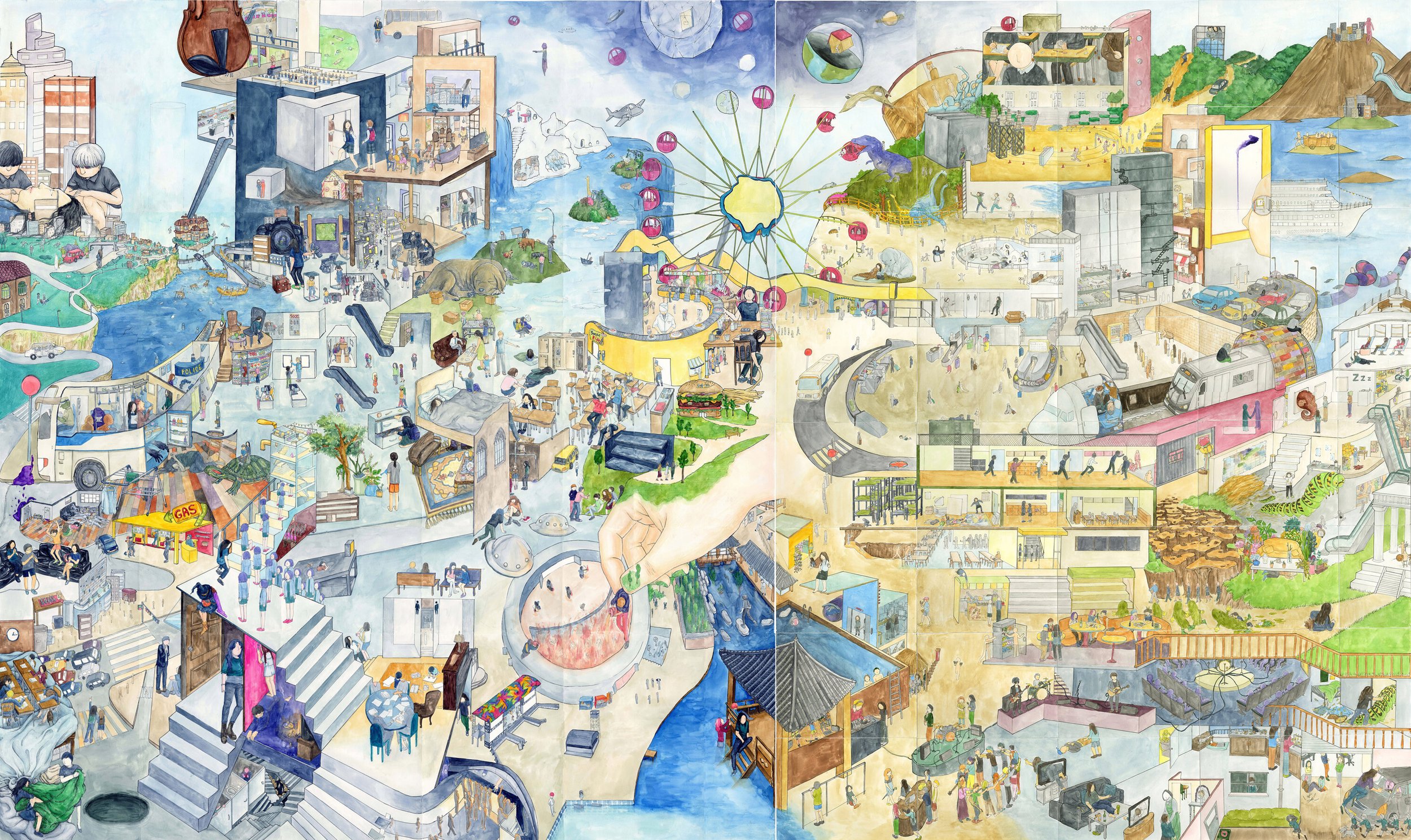
ZZZ (2018) Animation Stills
Exhibition / Screening
ZZZ(solo exhibition), Beaton Gallery, Columbus, OH, 2018
Left to Devices, SVA Flatiron Gallery, New York, NY,2018
Lines of Thought, CICA Museum, Gimpo, South Korea, 2018
Young Hearts 7, Sean Christopher Gallery, Columbus, OH, 2018
Development
drawing timelapse

dream journals

organization of context

sketch for drawing
Exploring The Psychological Home By Dreaming
One night, I dreamt about running away from the elementary school classroom. Everyone was chasing after me, but I successfully escaped by flying through the window. I flew over the school yard, hometown city, and the ocean. There were many little islands that I never knew about. I landed on one of them and the next adventure began. These fragments inspired me to create a new imaginary world with drawings and experimental animations. To depict different complicated dream experiences, I attempted to use various mediums and styles. In this paper, I will state how the harmony and distortion between the traditional and digital mediums question the boundaries of different dimensions and concepts to express ideas of unconsciousness and home.
I make daily records of each dream by writing, drawing, or voice recording. This information is then categorized by date, place, and types of events that occur within the dream. These records are the blueprint determining the layout of my hybridized dream world. In order to accurately reflect the atmospheric quality of my dreams, I carefully consider the relationships between shape, color, lighting, and the function of each object and creature. For instance, I dreamt of going to a conveyor belt sushi restaurant in an amusement park which offered a psychological test. I realized conveyor belts and rollercoasters have a similar construction, so I drew a sushi belt that becomes a rollercoaster ride with sushi dish shaped seats. I composed sushi belt as a foreground and rollercoaster as a background, so the scale of the people taking sushi from the belt and the people going on a ride shifts substantially. As a result, eccentric constructions and perspective distortion are formed.
Changing and developing the composition in pencil, I use a fine ink pen-liner to outline the shapes and add more depth to objects with water color and color pencil for overlapping shades. The contrast between realistic visual representation and unusual scenes made from this process completes the juxtaposition. Since dreaming is mostly time-based experience, I make digital animation effects over drawings to establish the sense of movement. I also mix the sound effects to amplify the multi-sensory impression, because sound could be memorable elements of a dream. To cite an amusement park scene as an example, I added the digital effect of a moving conveyor belt so that both sushi dishes and the rollercoaster ride have unexpected motion which for more interesting and entertaining visual impact.
Different styles and techniques demonstrate rich and chaotic directions. Therefore, I also make separate animations such as claymation, paper-cut stop-motion, erase stop-motion, and digital drawings, based on the same idea. The most different and intriguing part of working in animation versus drawing is how the connections and transitions between the scenes take place. The video works I make tend to connect to each other because they share a common surrealistic narrative with one main character who is central to the story. This main character is not limited to being the representation of myself and can be any anonymous figure. I want audiences to put themselves in the character’s place and experience the whole story through their own perspective.
The use of symbols in animation is also important as a transitional instrument. I display representational objects or manipulate the way how spaces between the scenes change. For instance, the object door and bed monster character is used as a metaphor of a progression to tell the viewer that the main character is entering to the next dream stages. Door can be both a transition of different places and a protection of a personal place. It provides the idea of going around to various directions of virtual world. Bed monster is a bed shaped character with a smily face which use long arms to pull people into dreams. By using a part of character as a storytelling mechanism, it suggests the unexpected enjoyment and causes viewer’s curiosity.
As I create this new world, I am inspired by how dreams have been treated historically by psychoanalysts. Sigmund Freud used the potential of dream for clinical psychoanalysis and wrote The Interpretation of Dreams. He suggested that there are two mental processes in dreams, one is showing the unconscious instinct for wish fulfillment and the other is the force of hiding those desired expressions. In contrast, Carl Jung developed his interpretation of dreams analytically. He asserted that dreams show one’s personality and use symbols to inform hidden meanings. Both of these thinkers viewed dreams as deeply related to unconsciousness.
While recollecting the dream pieces, I found that dreams are made up of the collections of memories and unconscious elements in our mind. Dreams show my reactions to personal experiences, likes and dislikes. Especially, my thoughts about social issues I’m concerning everyday including misogyny, racism, homophobia, patriarchy, and various emotional pressures in East Asian culture. As an example, I have dreamt about escaping from school several times. I realized that it’s because I was stressed about having educational pressures as a student and forced to be a stereotype as a woman while I was in Korea.
The process of making this world, is a great way to do self-reflection and also encourage people to consider my perspective. You can be lost in a surrealistic world and enjoying unordinary juxtapositions, and also follow the random figure to elaborate portions of story in a certain view it provides. Through a closer look at each detail, audiences can create their own responses based on individual interpretations of these unusual scenes. In my work, drawing and experimental animation form realistic and unrealistic components that visually display an unconscious places. By reorganizing memories and finding ways of expressing suppressed thoughts, I’m creating my own psychological home.

